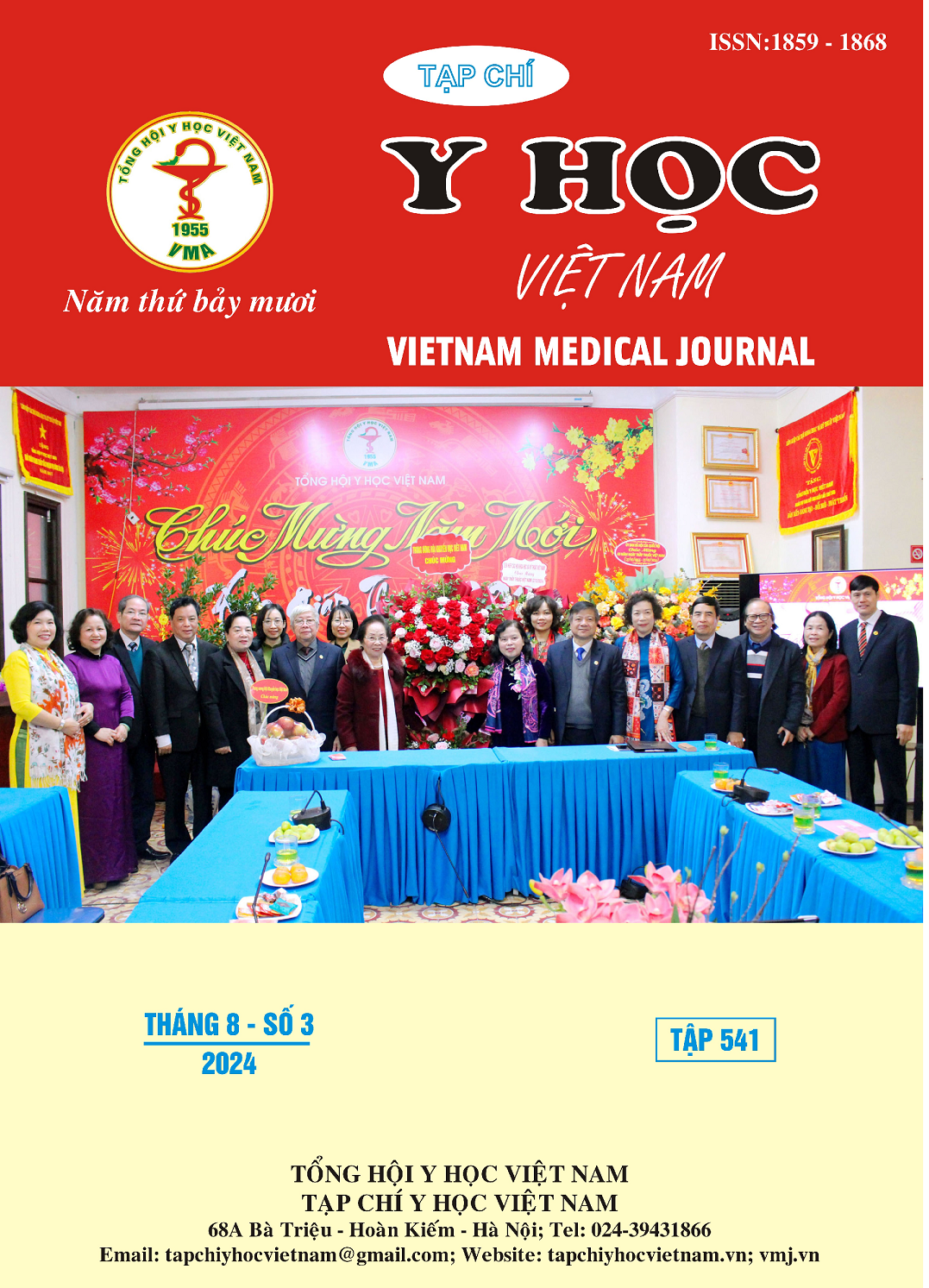RESULTS OF IMMEDIATE RESTORATION AFTER MAXILLECTOMY
Main Article Content
Abstract
Objective: evaluate the initial results of immediate restoration using 3D rendering techniques after partial maxillary resection surgery. Subjects and Methods: prospective, cross-sectional study on 11 patients who were applied 3D rendering technique to immediately restore maxillary bone defects after surgery to remove maxillary bone tumors. Results: The most common defect in the study was the defect of maxillectomy involving the peri-orbital accounting for 54.54%; 36.36% of the cases are defects of maxillectomy not involving the orbit; orbitomaxillary defect accounts for 9.09%. After surgery, 100% of patients heal and have a good head. 100% of patients did not limit mouth opening after surgery. 100% of patients after surgery have correct bite. Follow-up results from 3 to 12 months showed that after 3 months of surgery, 18.18% of patients continued to eat thick foods and 81.82% of patients could eat normal foods. After 6 months, 100% of patients can eat normal food. No patient's face had imbalance or loss of aesthetics. Conclusion: Immediate restoration of maxillary bone defects after surgery to remove maxillary bone tumors can shorten the postoperative time. Immediate restoration using 3D digital rendering can preserve facial aesthetics as well as chewing function.
Article Details
Keywords
maxillary bone, 3D rendering technique, immediate restoration.
References
2. Wei F-C, Celick N, Chen H-C, et al. Combined anterolateral thigh flap and vascularized fibula osteoseptocutaneous flap in reconstruction of extensive composite mandibular defects. Plast Reconstr Surg 2002;109:45-52.
3. Cordeiro PG, Santamaria E. A classification system and algorithm for reconstruction of maxillectomy and midfacial defects. Plast Reconstr Surg. 2000;105(7):2331-2346.
4. Brown JS, Shaw RJ. Reconstruction of the maxilla and midface: introducing a new classification. Lancet Oncol. 2010;11(10):1001-1008.
5. Kääriäinen M, Kuuskeri M, Gremoutis G, Kuokkanen H, Miettinen A, Laranne J. Utilization of three-dimensional computer-aided preoperative virtual planning and manufacturing in maxillary and mandibular reconstruction with a microvascular fibula flap. J Reconstr Microsurg. 2016;32(2):137-141.
6. Pang JH, Brooke S, Kubik MW, et al. Staged reconstruction (delayed-immediate) of the maxillectomy defect using CAD/CAM technology. J Reconstr Microsurg. 2018;34(3):193-199.
7. Pre-emptive Designing of Immediate Surgical Obturator. Mohamed K, Subhiksha R, Preetha K.Indian J Surg Oncol. 2021 Dec;12(4):745-749.
8. Obturator prostheses versus free tissue transfers: A systematic review of the optimal approach to improving the quality of life for patients with maxillary defects.
9. Brandão TB, Vechiato Filho AJ, Batista VE, de Oliveira MC, Santos-Silva AR.J Prosthet Dent. 2016 Feb;115(2):247-253.e4.
10. Dholam, K. P., Bachher, G., & Gurav, S. V. (2019). Changes in the quality of life and acoustic speech parameters of patients in various stages of prosthetic rehabilitation with an obturator after maxillectomy. The Journal of Prosthetic Dentistry.
11. Kumar P, Alvi HA, Rao J, Singh BP, Jurel SK, Kumar L, et al. Assessment of the quality of life in maxillectomy patients: a longitudinal study. J Adv Prosthodont 2013;5:29-35.


